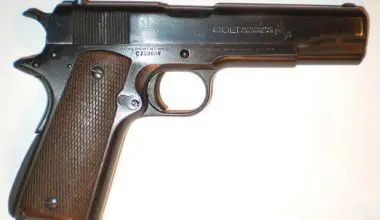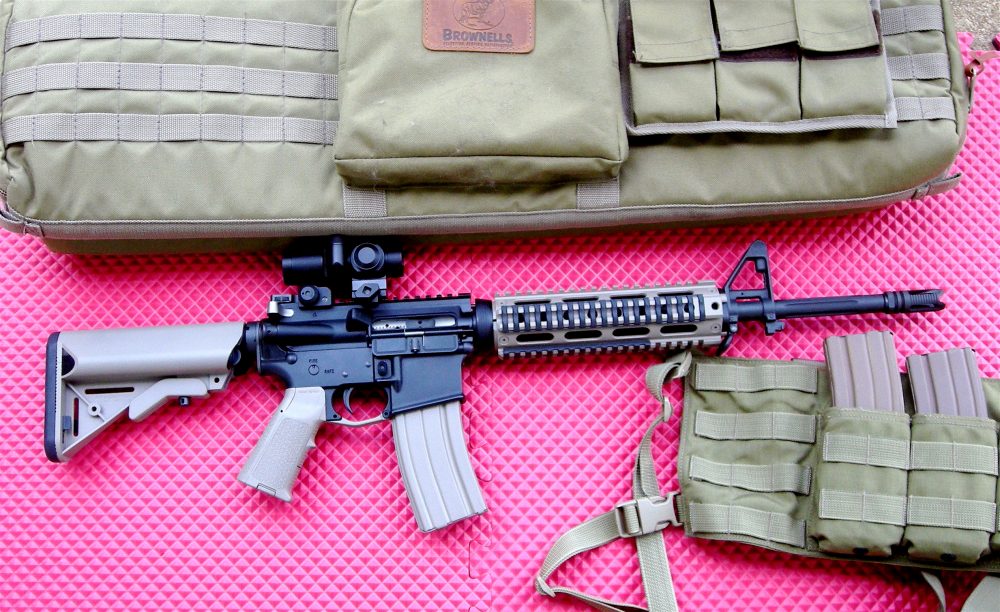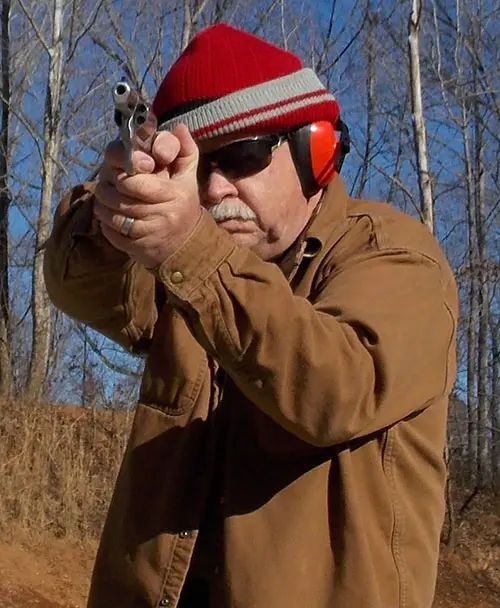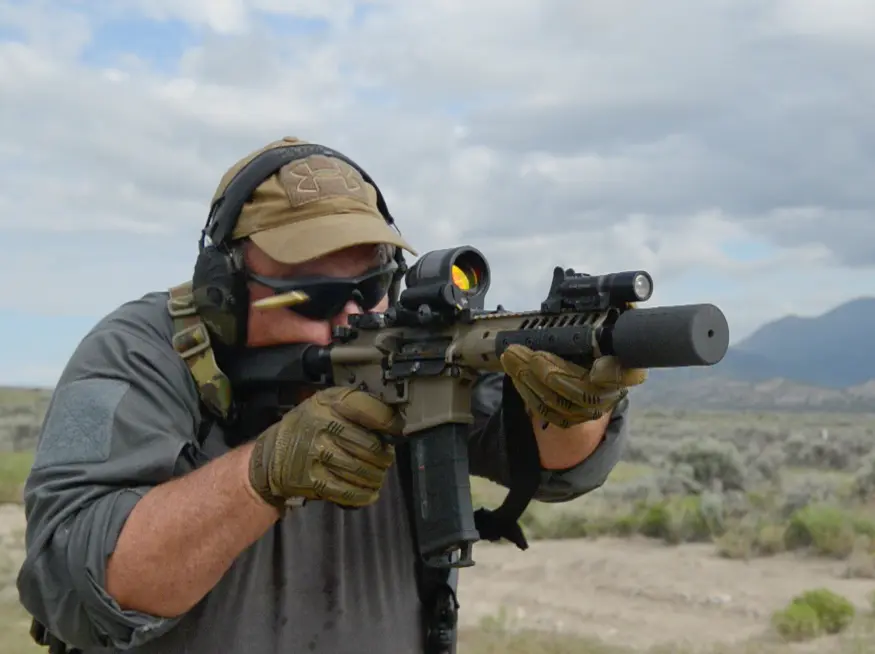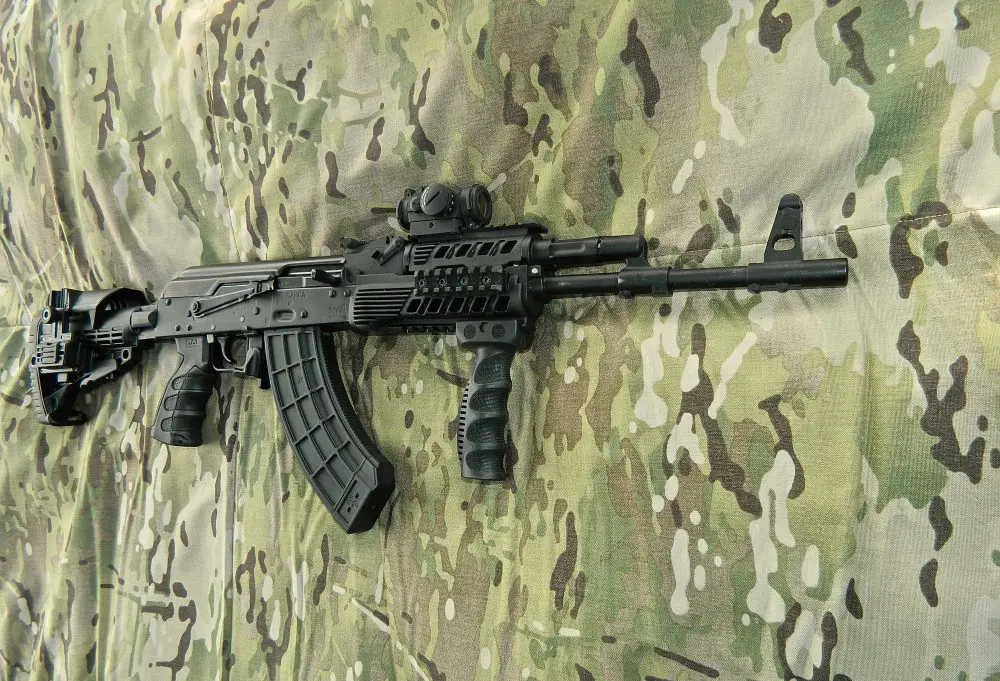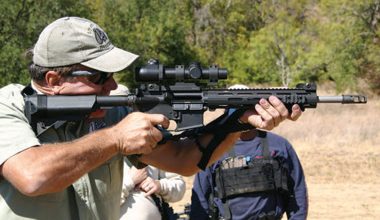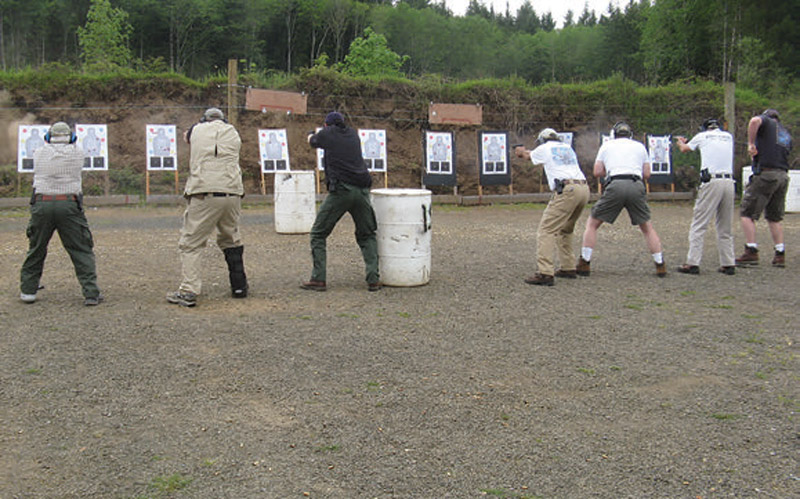
A few years ago, I received a “Tactical Pistol Training Tips” promotional DVD with my S.W.A.T. Magazine subscription. Like me, other readers may still have that DVD floating around their collections of training material.
This DVD was the first time I became aware of Rob Pincus. I was incredibly impressed at how Pincus based his training doctrine on empirical evidence, scientific observation and logical thought. The methodology Rob presented on camera was one that I took to heart, and I have used it as a basis for my self-training ever since. I still go back to this DVD every now and then, to refresh both my mind and my reflexes.
Back up: Did I just say “self-training”?
Table of Contents
SELF-TRAINING
I fully admit I was one of those poor souls who believed that he could skirt by teaching himself until he finally got around to professional training. I certainly never told myself that I didn’t need training—I actually wanted to train very badly.
I was simply hung up on the prohibitive costs involved. It can be very expensive! Keep in mind this was during the Great Ammunition Depression of 2009, so it was hard to get my hands on any sufficient quantity of .45 ACP. So I would buy a box when I could find it, and go out to teach myself (BIG mistake).
Ultimately, however, there is no excuse for a lack of professional training. I now know that I was a complete liability to the people around me, and if I had been involved in a truly dangerous incident back then, I probably would’ve been killed.
I understood what to do and why to do it, but without a professional instructor there to watch and critique my execution of the needed skill sets, I never understood how to accomplish the tasks at hand. As a result, I developed bad marksmanship habits over the course of two years, solidified those bad habits in cement, and wasted over 1,000 rounds of ammo and a few hundred dry fires in the process.
UNDER THE INFLUENCE OF S.W.A.T.
I’ve been reading S.W.A.T. Magazine since 2006 and always wanted to get my rear in gear and do some real training. S.W.A.T.’s pages influenced my first firearms purchase and filled my checklist with a dozen instructors and facilities I wanted to learn from. However, due to the logistics of taking time off from work and investing in transportation to fly off to God-knows-where, it was not in the cards. I live in northwest Washington and work as a cook in a restaurant—I simply can’t afford to travel very far.
This last spring, I was browsing the websites of many of these training schools and stumbled across information that Rob Pincus of I.C.E. Training was instructing a two-day Combat Focus Shooting Course at the Firearms Academy of Seattle (FAS) range in Onalaska, Washington. I signed up the next day and bought 1,000 rounds of ammo at the local sporting goods store.
COMBAT FOCUS SHOOTING DOCTRINE
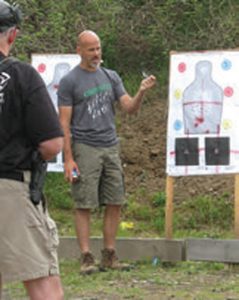
Combat Focus Shooting (CFS) is a program developed by Rob Pincus that focuses on the three- to five-second timespan under which most defensive shootings take place. Rob teaches the fundamental skill sets needed to survive the fight. He doesn’t teach you how to be a better shooter on the static range; rather he teaches you how to fight with a gun. Rob teaches CFS courses under the auspices of his company, I.C.E. Training.
CFS doctrine is based largely on two factors: the scientifically validated physiological reactions the human body uses to respond to stress and danger, and empirical evidence of real-world shootings as compiled by Tom Givens of Rangemaster.
CFS instructors teach students to prioritize their training based on what is plausible for them to encounter in the real world, and then keep their training in proper context to that plausibility. As a result, Combat Focus Shooting really hammers in the fundamentals while avoiding the far-fetched possibilities.
FAS FACILITIES
The Firearms Academy Of Seattle is run by Marty Hayes, who is also director of the Armed Citizens’ Legal Defense Network. The FAS facility is very comprehensive, with 360-degree bays, a threelevel marksman’s tower, and several one-way ranges that span from 25 to 300 yards. Walking around the facility, I was very impressed with what Marty has to offer his students. While the entirety of the Combat Focus Shooting course was taught on the 25-yard pistol range (with the exception of indoor briefs/debriefs), I’ll definitely be back for more courses at FAS.
TRAINING DAY 1
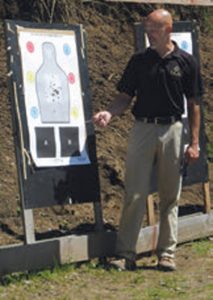
I showed up for the course with a fairly simple load-out, hoping to maximize my learning potential by minimizing the gear I didn’t need. My carry was a Springfield XD Service in .45 ACP with ambidextrous thumb safety, riding in a Blackhawk SERPA concealment holster on a 5.11 Tactical leather belt. I brought along six magazines total, performed combat reloads from a Maxpedition Single Sheath, and carried my spare mags in pockets and an XD Gear mag carrier. I brought 200 rounds of 230-grain Magtech, as well as about 1,300 rounds of 230-grain Blazer Brass. All ammo was full metal jacket.
At the initial briefing, I discovered I was the only person attending the class who had no prior professional training. Only a handful of students were of law enforcement or military background, while the majority were private citizens. Several of those present were competition shooters who had never taken a defensive shooting course.
BALANCE OF SPEED AND PRECISION
After a safety lesson, Rob walked us through the whys and hows of the CFS training doctrine. He spelled out the reasons why he teaches what he teaches, and made sure we all understood the context of his teaching. At the center of the CFS doctrine is the
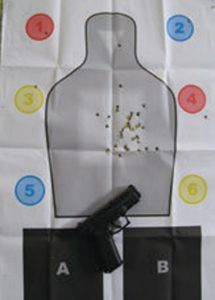
Balance of Speed & Precision (BS&P). The fundamentals of BS&P are as follows:
- The target dictates the need for precision.
- The shooter’s application of skill determines whether or not he gets the hit.
- The shooter’s comfort/confidence in his ability to get the hit determines the speed with which the shot is taken.
Pincus believes that the situation you find yourself in will dictate the level of accuracy required, as well as how you achieve that accuracy. He teaches the importance of getting “combat accurate” hits, which means any shot that has a significant chance to hinder the target’s ability to harm you.
If a student asks, “When should I use my sights?” the simple answer is, “Whenever you need to.” If you’re capable of putting multiple hits into the high center chest without using sights, then fire away. However, if you’re taking a very demanding shot over a long distance or trying to hit a target behind cover, then you need to slow down and use the sights to ensure the hits.
CFS teaches that ultimately, the situation you find yourself in will dictate what you need to do. Bottom line: get the hits however you can, and get them as fast as you can. It’s critical to end the fight as fast as possible, and putting seven rounds into a six-inch group is a lot better than putting four rounds into a three-inch group.
When we got out to the range and on the firing line, we followed a standard “crawl, walk, run” process. We started by working on proper extension, trigger control, and stance, and experimented with point shooting and using the sights. Rob, along with fellow CFS Instructor Grant Cunningham, monitored the line and critiqued our execution until most people were capable of getting simple hits.
BAD HABITS CAUSE BIG TROUBLE
My bad habits started giving me trouble right away. Being left-handed, most of my shots were low and right a few inches, even at ten feet, with some flying way off to the right. The odd thing was that if I slowed down and concentrated, my shots were consistently off. However, if I shot more “on the fly,” my hits were on target about half the time.
Grant spent a lot of time at my end of the line, helping me with my technique while keeping an eye on the other shooters nearby. One by one, he corrected my mistakes, from grip to extension to sight alignment. But despite his efforts, many shots were still low and right. My shooting was so inconsistent that Rob actually came over after lunch to test fire my XD to be sure the sights weren’t off. With one shot, he could tell that the weapon was working just fine.
About halfway through TD1, Grant suggested that finger placement on the trigger might be key. I experimented a bit with this, which caused me to lag even farther behind the class. Fortunately, I found that changing where the trigger contacted my finger did yield varying results.
Apparently, when I slowed down to aim down the sights, I was trying too hard and making contact with the trigger in a position that was unintuitive (follow-up testing the next weekend on the range back home verified this). Rather than trusting my finger to go where it needed to, I deliberately placed it in a position that was flat-out wrong without knowing any better, which caused my trigger pull to tilt the weapon down and right. This tilting occurs only at the point where the XD trigger breaks, which made it nearly impossible to recognize visually.
This, combined with the poor shooting habits I had to begin with, made learning the “right way” extremely hard. If I tried too hard, I tilted the gun and missed. If I didn’t try hard enough, I jerked the trigger and missed anyway. See the problem?
From this point on, I was able to identify most of my mistakes and started to catch up with everyone else. Now it was simply a question of breaking the old habits and making sure I did it right every time. The first day ended at about 350 rounds, and I was finally making some progress.
TRAINING DAY 2
After a short briefing and Q&A about TD1, Rob took us back out to the range. TD2 was mainly intended to solidify what we had learned on TD1 through repetition and critique. We also learned a few new drills, and Rob lectured on what turned out to be a lot of material, feeding it to us bit by bit throughout the day.
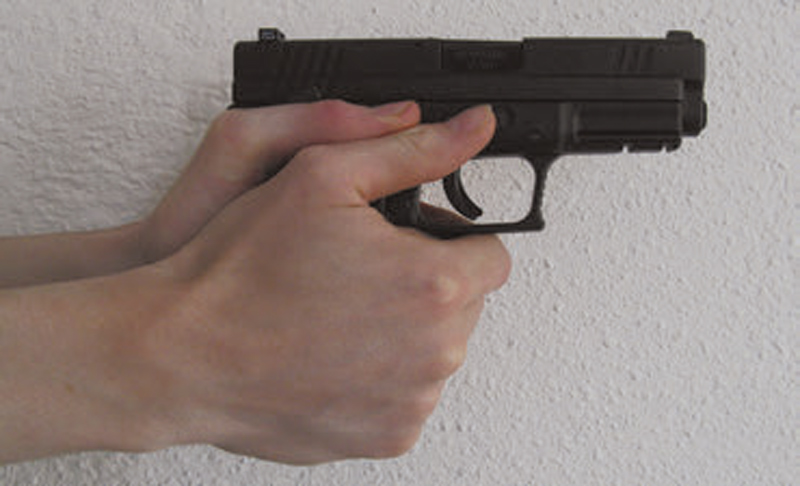
It slowly became apparent that I was catching up with the other students. While the experienced shooters were reaching their plateau, I was closing the distance quickly, capitalizing on everything I had learned.
Grant was once again behind me, monitoring my progress. I was still having serious issues with trigger control, but all my other problems had been eliminated.
For me, the most interesting part of TD2 was the Figure 8 Drill. In this drill, eight targets were set up along the main and side berms. One by one, each student walked around two markers on the ground, about six to eight feet apart, in a loose figure-eight path, at distances anywhere from five to 25 feet from the targets. The targets were mostly different, with numbers and letters spraypainted on them. Rob would call out any identifying features of the targets, such as a number or color on the target. The student would then engage the target or targets as appropriate.
WRAP-UP
By the end of TD2, I had gone through another 625 rounds, putting me just shy of 1,000 rounds total for the two days. The XD experienced its first-ever malfunction about halfway through TD2 on a Blazer Brass—a failure to eject. The XD had digested about 2,000 rounds in its lifetime at that point.
As for the content of the course, I’m extremely satisfied with what I learned, and I think Rob’s approach to defensive shooting is fantastic, due to it being rooted squarely in the confines of realworld application.
TRAINING COSTS
Rob pointed out at the beginning of TD1 that if somebody was sitting in the briefing room, they had already committed about $1,500 of their own money to be there. Because of this, students should not be hung up on the relatively minor costs of things like proper concealment garments or a good holster. My total investment ended up being at least $1,600. That included ammunition, magazines, lodging and transportation, membership to the Armed Citizens’ Legal Defense Network, and a concealed pistol license.
I consider all of these to be required investments, and they were worth every penny. It’s my opinion that almost anybody can find a way to invest in a defensive firearm and the proper training and tools needed to learn how to use it. You just have to find one at your price point. If you’re not willing to get proper training, then your weapon won’t be much use to you.
For any readers who have not yet attended a proper training course, my advice is to just do it! Don’t avoid training and don’t fall into the same trap I did of thinking it’s too expensive. It is expensive, but what is your life worth? I wasted a lot of money developing bad habits. If I had just sucked it up and done some training right away, I would have come out ahead in the long run, in terms of both shooting ability and money. The CFS course has helped prepare me for the unthinkable at home and on the street, and given me an edge for the career in law enforcement I’m pursuing.
It’s been a long journey, but I’ve finally taken the first step. The next time Rob Pincus comes back around here, I’ll be first on the firing line.
